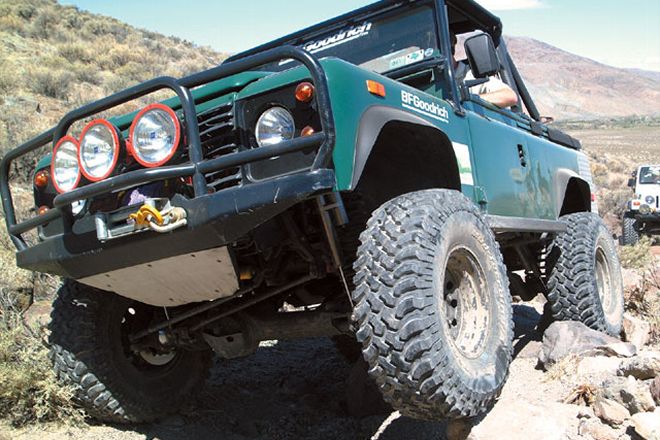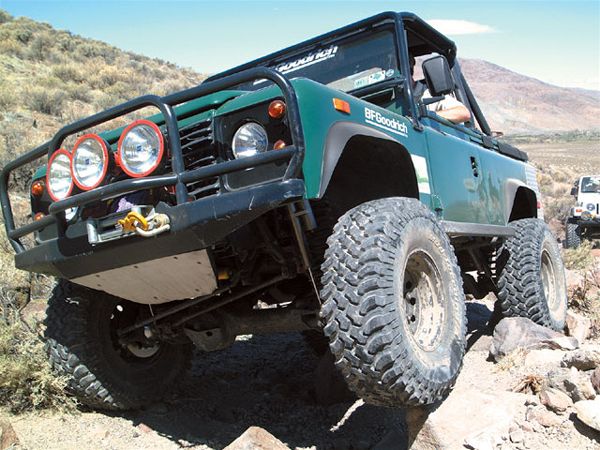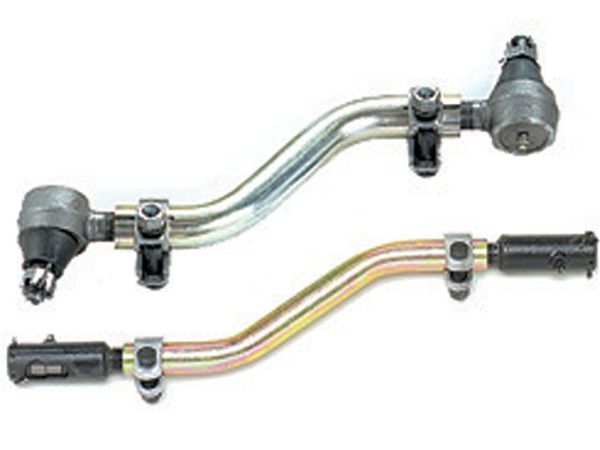
 Drew Hardin
Contributor
Drew Hardin
Contributor

Fixing a 4x4's steering geometry and alignment problems requires specialized components that return the steering system to its original operating angles. To do that, most suspension companies have devised modifications to the ends of the system: the pitman arm and drag link at the steering box, and the steering arms at the spindles. Plus, most offer alignment tools to put the wheels and tires back where they should be.
One of the first things you'll need is a dropped pitman arm. Dropped pitman arms are available from just about every suspension maker. The amount of drop required varies, depending on the lift you're working with, but the idea behind the arm is to span the now greater distance between the steering box (which is fixed on the chassis) and the drag link (which is mounted on the axle) so that the rest of the system will properly align.
 Depending on the application, you may need to use a dropped drag link along with a dropped pit arm, or just a dropped drag link by itself, to achieve the desired steering arm angles. Many of these are adjustable, having ends that thread into the link's body.
Depending on the application, you may need to use a dropped drag link along with a dropped pit arm, or just a dropped drag link by itself, to achieve the desired steering arm angles. Many of these are adjustable, having ends that thread into the link's body.
Adjustable drag links are another component designed to span the gap between the steering box and the steering rods. While the dropped pitman arms are made at a set size, the adjustable drag links typically have ends that are threaded into a tubular body. The length of the link can be custom tailored for a particular vehicle's needs. In some applications the adjustable drag link can be used in tandem with dropped pitman arms (common with lifts over 6 inches), or they can be used by themselves if a dropped pitman arm is not available (as with certain GM applications).
For IFS systems, several manufacturers have developed dropped center links that not only restore tie-rod angles to their stock configurations, but also help to beef up the steering system. These links are usually far stouter than the stock pieces, as are the replacement idler arms.
At the knuckle end of the system, manufacturers have designed replacement steering arms and steering arm blocks, both of which are designed to raise the arm/tie-rod mount point to level the tie rod angles. Some replacement steering arms are also shaped to restore the vehicle's correct turning angle. (Also known as the Ackermann angle, this bit of steering tuning allows the inside tire to turn at a sharper angle than the outside tire, since the inside wheel has to turn within a smaller radius than the outside wheel does.)
Resetting the wheel alignment can be done in several ways, depending on the vehicle. In some cases, new alignment shims or bushings can be installed on the knuckle and tweaked to provide the proper camber and/or caster. Some vehicles, like Fords with Twin-Traction-Beam suspensions, require dropped radius arms to put the front-axle caster back in line. (If you lower the suspension without moving the arms, the axle will rotate forward and eliminate the required positive caster.)
Alignment is a critical enough issue, and requires so much precision, that most manufacturers recommend you have it done by a professional alignment shop after lifting your truck. Happens to us all the time. Whenever we photograph a new lift going on a truck, the installation process isn't really "done" until the truck comes back from the alignment shop.





